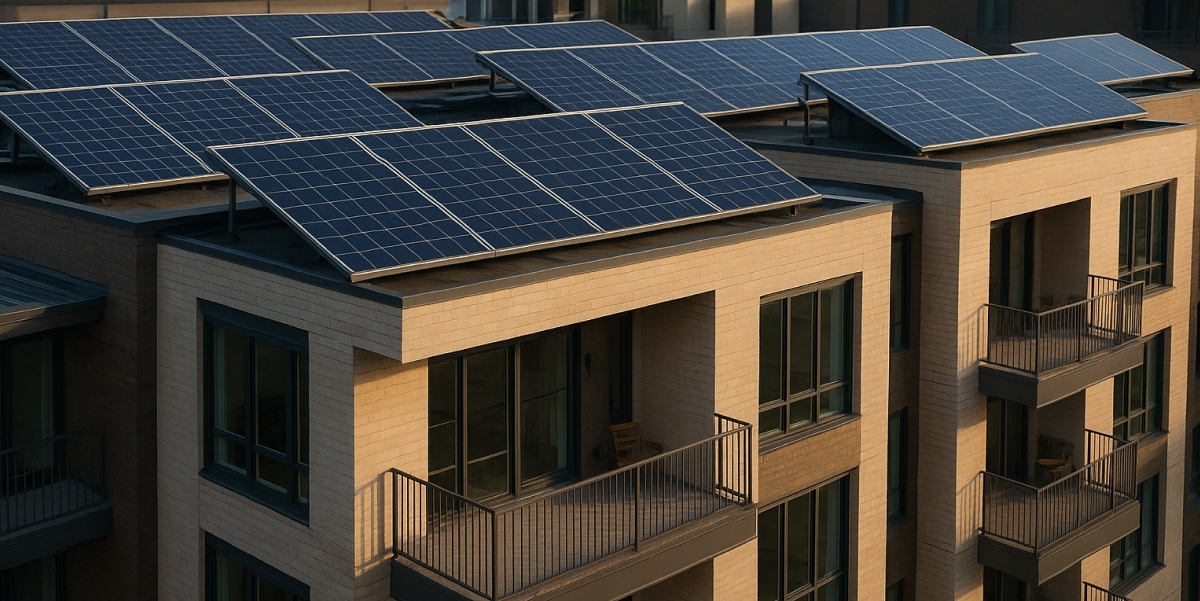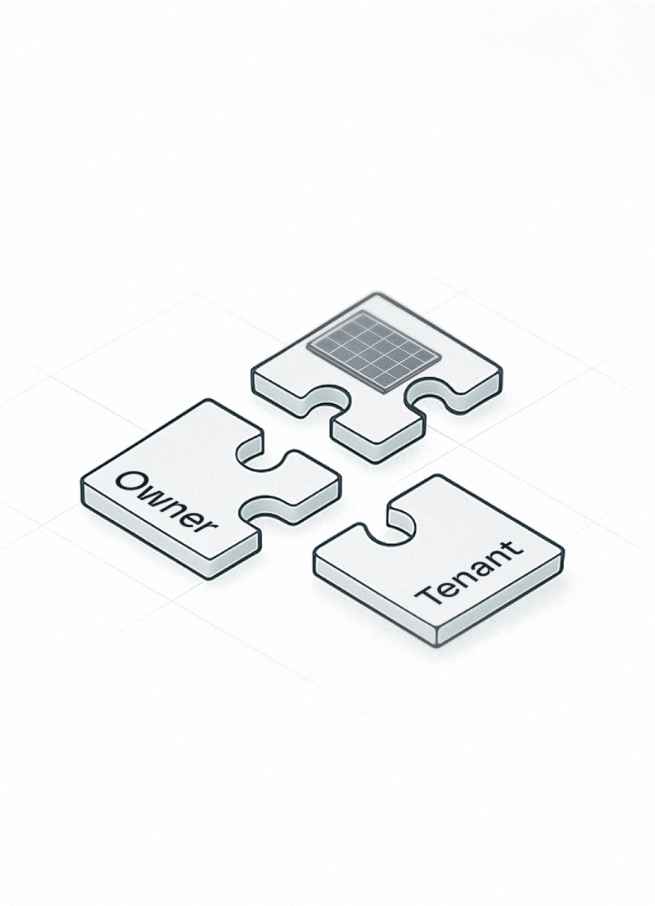Safe Harbor: How to Qualify and Lock in the Solar Investment Tax Credit (ITC)

The 30% federal Investment Tax Credit (ITC) remains one of the strongest incentives for solar power projects. Unfortunately, it was officially phased out under the new One Big Beautiful Bill Act (OBBBA). However, with the right strategy, you can still lock it in today to claim the benefits.
In an earlier post, we highlighted three essential ways for new solar projects, including multifamily properties, to qualify for the ITC. One of those strategies is to “safe harbor” your solar project, an initially risky option at the time due to the absence of clear rules and guidelines.
Last month, however, the US Department of the Treasury and the Internal Revenue Service (IRS) released comprehensive guidance that set the rules, timelines, and practical steps for qualifying for the ITC under the OBBBA. All of these updates were front and center during the recent ITC Safe Harbor webinar hosted by Ivy Energy and HES Renewables.
In this article, we’ll walk you through the entire safe harbor process, share key takeaways from the webinar, and explain why acting soon is the surest way to secure your full ITC benefit.
What is the Solar ITC and Why Does it Matter?
As a multi-tenant property owner or investor, the solar ITC can play a crucial role in maximizing the ROI of investing in solar. The ITC for solar (or wind and other renewable energy systems) is a federal incentive that allows owners of commercial renewable energy systems to deduct a percentage of the system's cost from their federal tax liability. The tax credit rates are:
- Base credit: 30% of eligible project costs
- Base adders: up to 30% more if the project meets other criteria, including:
- Located in low-income communities: 10-20%
- Energy communities (retired coal facilities, etc.): 10%
- Domestic components (US-made): 10%
The majority of the cost of a solar project is tied directly to installing the solar system, including panels, inverters, racking, and battery storage. Securing these credits for your project can result in significant savings on expenses and higher returns on your solar investment.
The Clock is Ticking
The ITC rates for multifamily properties and other commercial projects will remain in effect through 2027; however, the timeline to qualify has been shortened, and additional requirements have been introduced over time due to the new legislation. So, the sooner you begin your solar project, the easier it will be to preserve the full credit and all adders.
Here are the key dates to consider if you want to lock in your Investment Tax Credit for solar:
December 31, 2025
Safe harbor your project by this date to qualify for the ITC and lock in the ITC rates without the new sourcing restrictions.
Your “placed in service” deadline will be: December 31, 2029.
July 4, 2026
New projects started between January 1, 2026, and July 4, 2026, must use non-PFE (Prohibited Foreign Entity) and domestic materials to qualify for the ITC. (PFE is formerly known as FEOC, or Foreign Entity of Concern.) New projects using equipment or components from PFE (countries such as China, Russia, Iran, North Korea, etc.) cannot qualify for the ITC. Please note that this limitation may lead to increased costs due to fluctuations in the supply and demand for non-PFE components.
Your “placed in service” deadline will be: December 31, 2029.
December 31, 2027
New projects started between July 5, 2026, and December 31, 2027, must use non-PFE and domestic materials. Additionally, these must be built and placed in service much earlier than the timelines above to earn the tax credit. The average project schedule for a multifamily retrofit is 12 months, and projects on this timeline will likely face competition for supplies, in-demand installation crews, and a challenging permitting and interconnection process.
Your “placed in service” deadline will be: December 31, 2027.
Why Move Before 2026
As the webinar co-presenters discussed, property owners must take action before December 31, 2025, to achieve the least stressful timeline and fewer regulatory requirements. The ITC will remain available until the end of 2027; however, the rules will become more complex, and there is a higher risk of not qualifying for the credits or missing the “placed in service” deadline. With sourcing restrictions in effect next year, demand for approved equipment is expected to surge, resulting in higher prices and longer lead times.
Furthermore, the compressed timeline (from July 2026 to December 2027) is barely sufficient for solar development and implementation. Solar projects require more than 18 months to complete critical steps, including design, permitting, procurement, construction, and utility interconnection. It is possible, but it will be an absolute sprint to the finish line.
Safe Harbor Basics
To ensure you qualify and lock in the ITC, regardless of whether your solar is serviceable by December 2027, you can “safe harbor” your solar project today. To safe harbor means to “begin construction” early, locking in today’s ITC rules while you complete the project later.
According to the new ITC guidelines by the IRS, you can technically begin your solar project and qualify for the ITC. This is possible if, by December 31, 2025, your project passes one of the following tests:
- 5 Percent Test: At least 5% of the total project cost has been incurred. To meet this, you can purchase any design-specific equipment, such as modules, inverters, or custom-engineered carport steel, before the end of the year. Most multifamily projects qualify for this simpler route.
- Physical Work Test: A “significant” amount of construction, whether onsite or off-site, has been done and is being continuously done. Fabricating custom steel for solar carports off-site can count.
Safe Harbor Pro Tips:
As the cost of equipment and other materials may rise during project development, aim to achieve at least 7% of the total costs before the deadline, ensuring the 5% threshold is still met when the final project budget is established.
Keep meticulous documentation to claim credit. You’ll need proof of payment, such as purchase orders and invoices, that show materials were purchased for the specific solar project. Keep separate documentation if you have multiple solar projects.
Gauge larger solar projects (above 1.5 MW AC) using the Physical Work Test. Use the 5 percent route for smaller systems, which still covers most multifamily rooftops.
Work with an experienced commercial solar installer. Due to the tight timelines and regulatory requirements, it is crucial to work with an installer experienced with commercial solar installs for multi-tenant properties. Contact us for a referral! We can connect you with one of our trusted partners in your area.
Steps to Lock in the Investment Tax Credit
Here’s a straightforward roadmap to safe harbor your solar project and guarantee the ITC:
- Analyze portfolio. Consult with your solar contractor and other solar service partners, such as Ivy Energy, to assess site potential, utility tariffs, and projected returns.
- Set up a contract and finalize the design. Execute an EPC (engineering, procurement, construction) contract and finalize the solar system design.
- Safe harbor by December 31, 2025. Purchase at least 5% of project-specific equipment or begin qualifying physical work before the deadline.
- Organize and maintain updated documentation. Keep detailed proof of expenditures and construction milestones. Update records as costs are incurred.
- Complete the project and claim credits. Complete the project and file for credit once the system is placed into service.
Safe Harbor = Locked In ITC
Safe harbor your solar project to lock in your solar tax credits. It’s a straightforward strategy to take advantage of today’s 30-60% federal tax credit on renewable energy projects. It can also shield your project from future supply chain shocks or regulatory changes.
Ready to explore solar or confirm your ITC eligibility? Connect with Ivy. We offer a free portfolio analysis and personalized guidance to maximize tax credits. Together, let’s map out the easiest and most rewarding path towards solar success!




